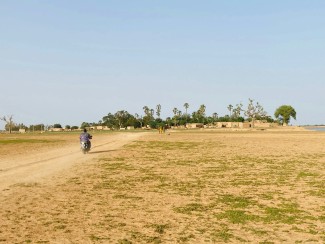|
|
|
Despite the large number of least developed country (LDC) graduations and the impressive social and economic feats of several graduating countries, inequality is rising. Governments and the international community can still play a part in easing the transition.
This implies stretching international support measures beyond the graduation date. It also means designing new mechanisms for graduating and graduated LDCs.
More of the same
Official donors should be urged to meet their aid targets for LDCs beyond the date of graduation (although paradoxically they already give more development assistance to graduating LDCs than to others, perhaps because they want to invest in faster growing countries where projects earn better returns).
Trade helps ease poverty, and its benefits should not be cut off too quickly, something which is recognised by the Enhanced Integrated Framework, which offers support to LDCs for five years following graduation.
The European Union already extends Everything But Arms (EBA) for a standard three years after a country leaves LDC status – why not longer? European clothing importers order a growing majority of their clothing from the graduating east Asian LDCs, so this should not be too hard a sell. Help could be offered with other preference schemes, such as with putting in place the international conventions necessary to qualify for the Generalised System of Preferences Plus scheme. The United States, too, could expand product coverage of its own preference scheme.
Rules of origin that qualify goods as coming from LDCs are often too stringent, and developed countries might consider extending the simplified terms for LDCs after graduation.
Prolonging flexibilities at the World Trade Organisation (WTO) would also help, such as the exception to the Trade-Related Aspects of Intellectual Property Rights agreement which allows Bangladeshi pharmaceutical manufacturers to copy patented drugs and to issue compulsory licences, exporting cheaply to other LDCs.
The international community could assist former LDCs in joining forces in negotiations. Membership of the LDC group at the UN and WTO, and in climate talks, carries considerable collective bargaining power. The provision of resources contingent on cross-collaboration among trade and climate negotiators would help break down the barriers that often exist between the two groups.
Time for something different
As well as continuing existing support for LDCs after graduation, new, targeted mechanisms for graduating and graduated LDCs should be considered.
Productive capacity remains the main challenge. However much market access they enjoy, most LDCs will always struggle to produce enough – which is why so many run trade deficits.
The international community needs to continue supporting LDCs in accumulating capital, building the technology and enhancing the domestic linkages and entrepreneurship necessary to raise production. Graduating countries can afford to invest more of their total income in building production than many LDCs below the threshold, which must prioritise consumption. Graduating nations also offer particularly receptive territory for technical assistance. Why not a dedicated production transformation fund for all LDCs, with targeted assistance for graduating countries, learning from middle-income success stories?
Public spending remains the best way of tackling inequality, and LDCs often struggle to collect enough tax. In Bangladesh, tax revenues are only 8.8% of gross domestic product, lower than the LDC average. The shortage of state funding for infrastructure is partly why the country’s roads and ports slow development. Public finance management is already a key part of international development assistance. Broadening the tax base helps countries self-finance development and reduces reliance on aid.
Might a dedicated facility for graduating LDCs make sense, particularly at a time when these countries face the prospect of lower aid flows over the longer term? Multilateral efforts to stem tax revenue leakages, to ensure banking transparency and to reform tax havens are at least as important.
In public finance management and other areas graduating countries need good, appropriate guidance from similar contexts. Technical capacity has evolved enough in most graduating countries that policymakers can put nuanced advice into practice. The challenges facing countries on the brink of leaving the LDC category are growing in technicality and specificity. A sufficient critical mass of countries now exists for mutual help on analysis and policy.
Funding for south-south and current and former LDC think tanks should be bumped up in order to build ownership over policy proposals and to tailor any recommendations to the national context.
Prominent institutions in graduating LDCs include Bangladesh’s Centre for Policy Dialogue, the Myanmar Development Institute, Lao PDR’s National Institute of Economic Research and South Asia Watch on Trade, Economics and the Environment in Nepal. Advice should be targeted at different clusters, such as the Asian, island or landlocked nations.
Many of the smaller graduating and former LDCs (like others) struggle to deal with the red tape required for environmental financing. According to the 2016 UNCTAD LDC Report: “While numerous funds have been established for adaptation, this has given rise to a complex architecture of multiple bilateral and multilateral agencies; some of the funds which exist remain seriously underfunded, and accessing funds is complex and time-consuming, particularly for countries such as LDCs with limited institutional capacity.”
While it is important to make sure that money is well spent, institutions like the Global Environment Facility should be urged to simplify their procedures or help recipients with applications. Most graduating LDCs fail to meet the economic vulnerability criterion. Better access to disaster risk insurance, too, would help ameliorate some of the impact on the worst-off.
Reaching the have-nots
Whilst technical assistance is part of the equation, aggregate economic progress does not always reach every section of society. The widening of inequality in so many countries worldwide has prompted many to rethink social inclusion. Handing cash straight to marginalised people may be one answer. A dedicated cash transfer mechanism for graduating and graduated countries could be a critical part of helping ensure that all parts of society are included in economic advancement.
In the larger graduating countries that appear likely to receive less support in the long run, economic growth can exist alongside deepening inequity. In others, like Kiribati, São Tomé and Príncipe, Solomon Islands, Tuvalu and Vanuatu, absorptive capacity for aid is already reaching its limits. These smaller nations, which are often very unequal, have high levels of official development assistance per capita but their governments are often overwhelmed by conventional development funding.
Unconditional direct transfers are a proven solution. Around 130 low- and middle-income countries implement at least one non-contributory unconditional cash transfer programme, either government or donor funded, or both.
Research on cash transfer schemes by donors like the United Kingdom shows that existing cash transfer schemes cut monetary poverty, raise school attendance, stimulate health service use and improve dietary diversity, reducing child labour and increasing women’s decision-making power. Transfers also target the marginalised and lead to more equitable and just outcomes, forming a valuable social safety net for the vulnerable.
Creativity and ambition
Doubtless there are many other ways in which donors and multilaterals could improve help for graduating LDCs, particularly measures that address inequality.
One of the obvious objections is: why not the other LDCs too? And why not middle-income countries facing similar challenges? But official development assistance is already being re-designed anyway under the Financing for Development agenda. OECD DAC donors are seeking to redefine aid to include private flows and blended finance. Now is a prime opportunity to aim new forms of assistance better at the exact demands of graduating LDCs, allowing the needs of other recipients to be addressed more precisely. The stubbornness of lingering inequality in otherwise dynamic nations calls for a more nuanced, targeted approach.
The 2030 Sustainable Development Agenda is clear that new forms of development assistance need to be tailored to the needs of the least advantaged. The private sector, donors and recipients all have an interest in leaving no-one behind.
A touch of ambition, invention and creativity would go a long way. Every person in those dozen graduating countries deserves to share in success.
-------
This article is the second of a two-part series. Part one looks at rising inequalities in Bangladesh and other least developed countries.
-----
Daniel Gay is an independent adviser working with the UN Committee for Development Policy on the Least Developed Countries. He can be followed on Twitter @DanGay
Header image - ©Jim O'Neill/EIF
If you would like to reuse any material published here, please let us know by sending an email to EIF Communications: eifcommunications@wto.org.



